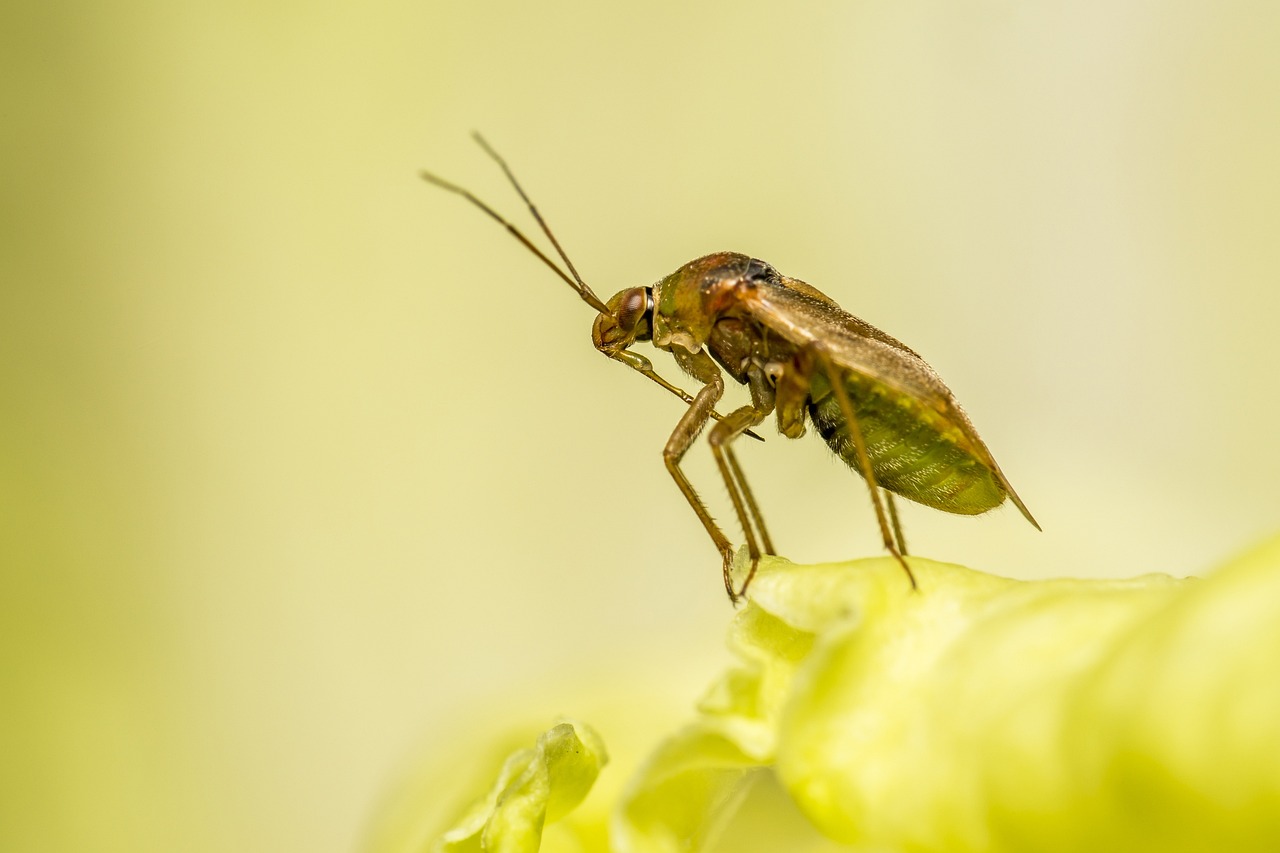Lygus rugulipennis, commonly known as the Tarnished Plant Bug or European Lygus Bug, is a widespread and economically significant species of true bug belonging to the family Miridae. Here’s an overview of Lygus rugulipennis:
Appearance:
- Size: Adults typically measure 5 to 6 millimeters in length.
- Coloration:
- General Color: The body color can vary from pale green to brown, often with a distinctive, somewhat mottled appearance.
- Markings: They have a characteristic yellowish-brown to dark brown pronotum (the shield-like structure behind the head) with fine, rugose (wrinkled) texture and pale markings. The hemelytra (forewings) are also mottled with various shades of brown, and the membranous portion of the wings is clear.
Habitat:
- Preferred Habitats: Lygus rugulipennis is highly adaptable and can be found in a variety of habitats including agricultural fields, gardens, grasslands, and disturbed areas.
- Geographic Range: This species is widespread across Europe and parts of Asia and has been introduced to North America.
Behavior:
- Feeding: These bugs are polyphagous, meaning they feed on a wide range of host plants. They primarily suck sap from the stems, leaves, flowers, and developing fruits of many plant species.
- Activity: They are most active from spring to autumn, with peak activity during the warmer months.
- Flight: Lygus rugulipennis is capable of flight and can disperse over considerable distances in search of suitable host plants.
Life Cycle:
- Eggs: Females lay eggs within plant tissue, which helps protect the eggs from predators and environmental conditions.
- Nymphs: The nymphs resemble small, wingless adults and go through several instar stages before maturing. They are green initially and gradually develop the adult coloration and markings.
- Adults: Adults can overwinter in protected locations such as leaf litter, crop residues, and other sheltered areas. They emerge in the spring to begin feeding and reproducing.
Ecological Role:
- Plant Damage: As a pest, Lygus rugulipennis causes significant damage to a variety of crops by feeding on plant tissues, which can result in distorted growth, flower and fruit abortion, and reduced yields. It is particularly notorious in crops such as strawberries, beans, and various vegetables.
- Predators: Natural predators include birds, spiders, and predatory insects like ladybugs and lacewings.
Economic Significance:
- Agricultural Pest: Due to its broad host range and the damage it causes to crops, Lygus rugulipennis is a significant pest in agriculture. Managing its populations is crucial to preventing economic losses.
- Control Methods: Integrated Pest Management (IPM) strategies are commonly employed to control Lygus bugs, including:
- Cultural Controls: Practices such as crop rotation, removing crop residues, and planting trap crops can help reduce populations.
- Biological Controls: Natural predators and parasitoids can help manage populations. For example, the parasitoid wasp Peristenus digoneutis targets Lygus nymphs.
- Chemical Controls: Insecticides may be used, but reliance on chemicals can lead to resistance and negatively impact beneficial insects. Therefore, judicious use and timing are important.
Identification Tips:
- Size and Shape: Look for a small, oval-shaped bug about 5-6 mm in length.
- Color and Markings: Note the variable coloration from pale green to brown, with a yellowish-brown pronotum and mottled wings. The rugose texture of the pronotum and clear membranous wing tips are key identifying features.
- Behavior: Observe their feeding behavior on a variety of plants, particularly if plant damage is evident.
In summary, the Tarnished Plant Bug (Lygus rugulipennis) is a small but significant agricultural pest with a wide host range and adaptability to various habitats. Effective management and control strategies are essential to mitigate its impact on crops.
Visited 902 times, 5 visit(s) today
Views: 1393
Subscribe to the newsletter:
